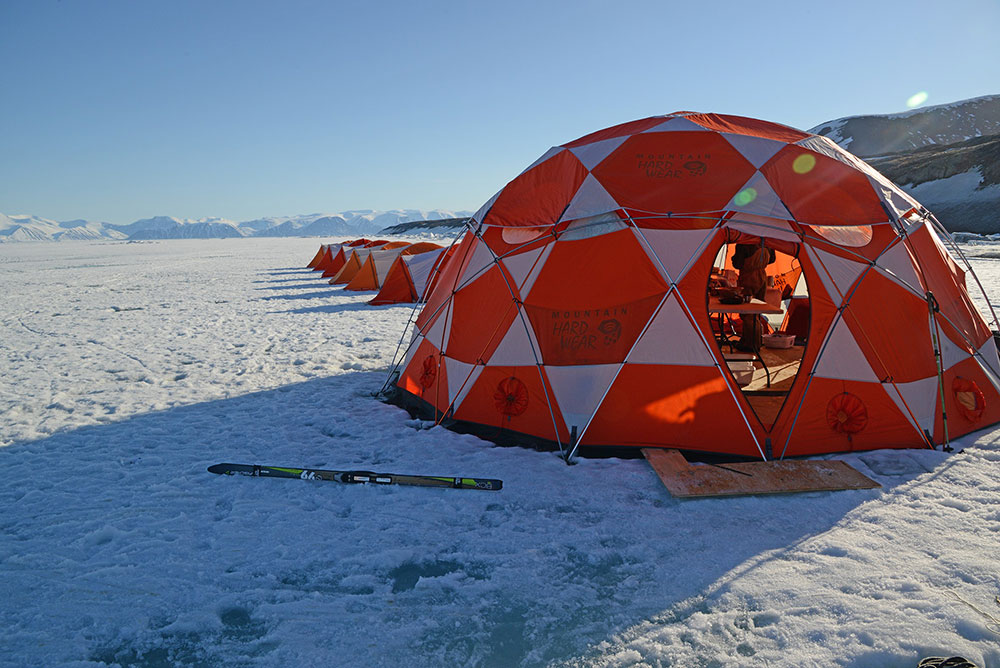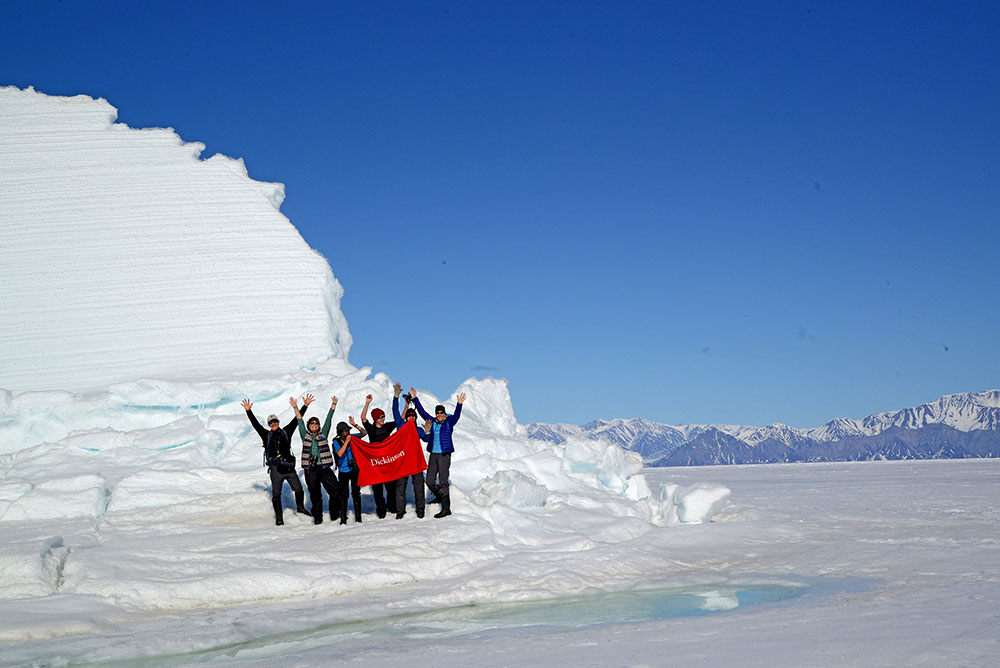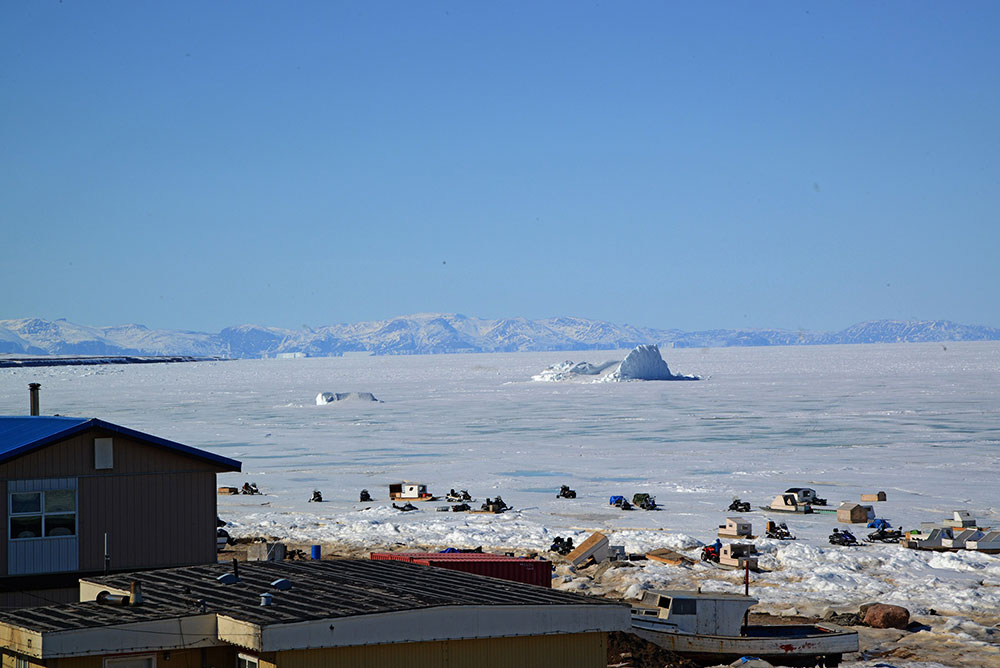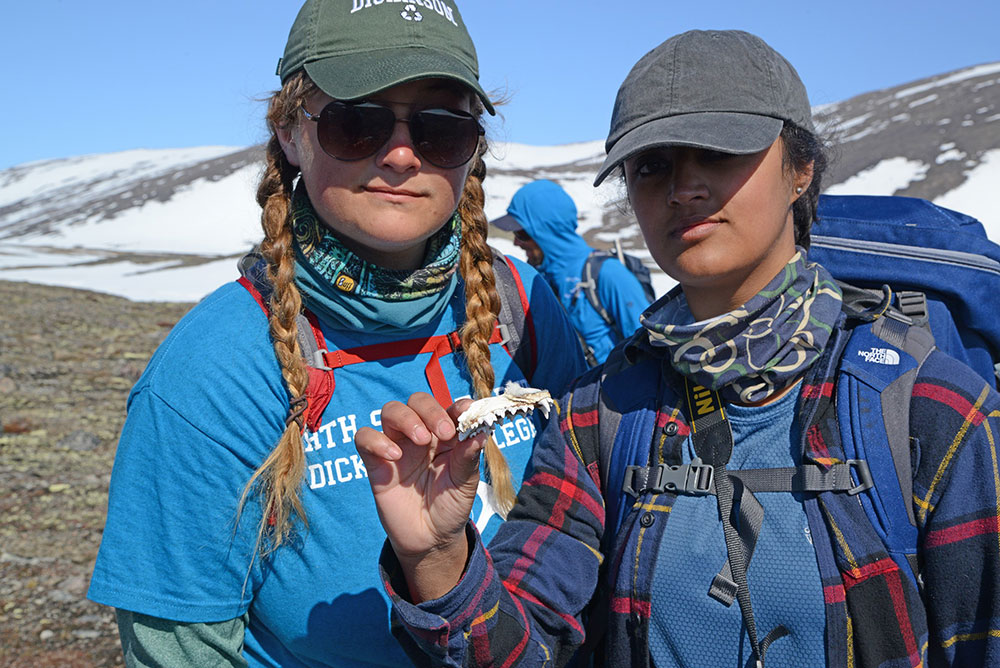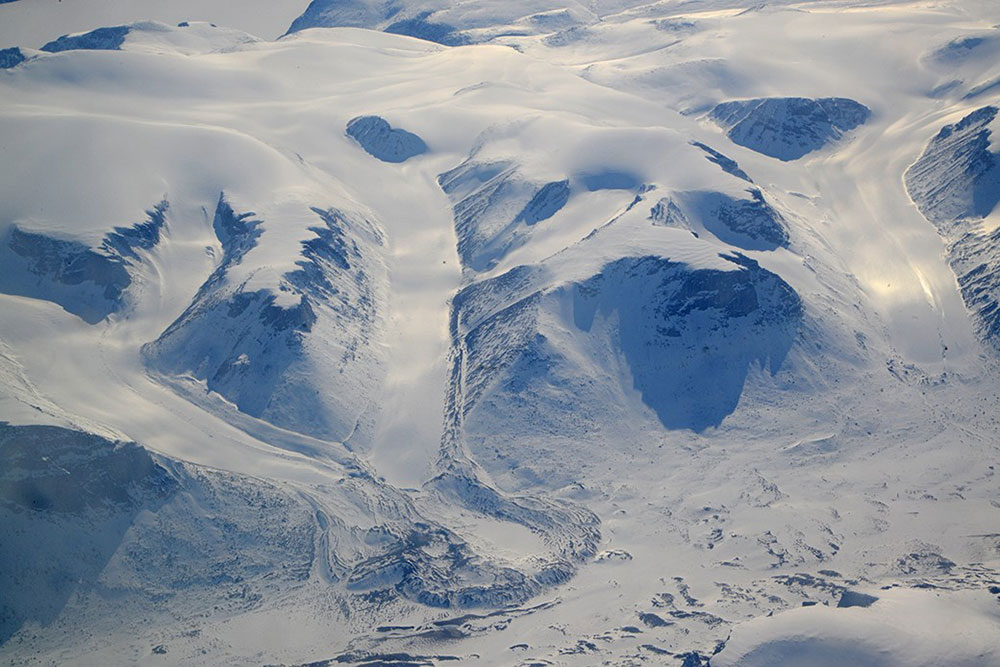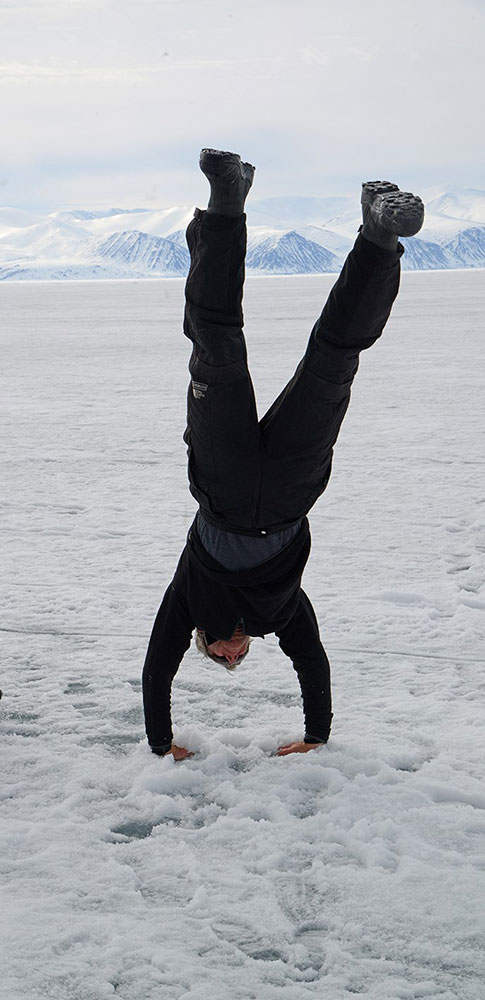Thanks to continued very generous support from John and Susan Pohl, we are growing our Arctic and Alpine Climate Change Experience program. In Summer 2016, a group of 6 Dickinsonians (Billy Dougherty ’18, Ivy Gilbert’18, Karuna Sah’19, John and Susan Pohl, Ben Edwards) expeditioned to Pond Inlet, at the northern edge of Baffin Island, and trekked out onto the frozen waters of Eclipse Sound to camp on still frozen sea ice for a week. The flight up because a short course on glaciers as we flew over vast expanses of retreating ice on the northeastern mountains of Baffin Island. Once we got our gear packed in qamutiiks (wooden sleds about 10 feet long), we were hauled about 4 hours down the ice to the eastern edge of Eclipse Sound, where it enters northwestern Baffin Bay. While camped on the sea ice we explored the ice floe edge where we saw and heard narwhals and seals, lots of birds, and even a polar bear (we had an inuit guide with bear protection 24/7!). To learn more about the structure of the spring sea ice, we augered holes in several locations and found ice as thick as 1.4 m (this was comforting!) and as thin as 40 cm (somewhat less comforting…). We also recorded pH and conductivity measurements of water within the sea ice, and found that it had components from surface melting (relatively ‘fresh’ water, lower pH and EC) as well as sea water within the ice layers. We also spent time examining incredibly colorful and mineralogically diverse metamorphic and excellent exposure of cross-cutting dykes. We climbed to the top of a local mountain, where we had incredible views of ice bergs (likely calved from Humboldt Glacier on northwestern Greenland) and of the structure of the sea ice across the sound. The trip ended with a very memorable ride back to Pond being towed through 10-20 cm of water, which had formed a vast lake on top of the sea ice. We were glad to be on wooden sleds that we hoped would float if necessary…
